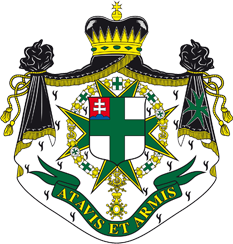Slávnosť svätého Sebastiána mučeníka -patróna v Acesi .
SOLENNE CELEBRAZIONE DI SAN SEBASTIANO COMPATRONO DI ACIREALE
La festa religiosa più sentita dagli acesi è quella per il Santo compatrono della città San Sebastiano Martire. Il culto per il Santo centurione affonda le sue radici nel ‘400, quando il terribile morbo della peste colpiva intere popolazioni. Anche Acireale fu gravemente colpita dal male contagioso e fu così che il popolo si rivolse a San Sebastiano per auspicarne la guarigione.
Il Martire era considerato un taumaturgo della peste in quanto era riuscito a sopravvivere al martirio delle frecce e, siccome la peste si credeva fosse una punizione divina scagliata per mezzo dei dardi, vincendo le frecce il santo poteva vincere anche la peste. La piccola chiesa oggi dedicata a Sant’Antonio da Padova, ospitò a lungo i devoti di San Sebastiano fin quando, vista la crescente devozione, non fu necessaria nel ‘700 la costruzione dell’attuale basilica, sede della Commenda della Vergine del Carmelo dell’Ordine di San Lazzaro.
La vita di San Sebastiano è ben rappresentata nel ciclo pittorico di Pietro Paolo Vasta che si trova all’interno della basilica. Nato a Narbona in Francia, giovane si trasferisce a Milano con la madre e quindi si arruola nell’esercito di Diocleziano nella seconda metà del 200 d.C. Proclamata la sua fede in Cristo viene condannato a Morte per mezzo delle frecce. Miracolosamente rimane in vita e curato dalla nobile Irene prosegue la sua opera di apostolato. Viene titolato dal Papa Caio difensore della fede e successivamente condannato a morte da Diocleziano a colpi di bastone, è il 20 Gennaio del 304.
Ogni 20 gennaio Acireale tributa solenni festeggiamenti per l’amato compatrono. Sin dalle prime ore del mattino la basilica si affolla di devoti in trepidante attesa che la cappella dove il Santo è chiuso durante l’anno venga aperta. Alle ore 11.00, nell’affollata piazza antistante la basilica, fa la comparsa il simulacro del martire “nudo nell’atto di subire il martirio delle frecce” sull’artistico fercolo del ‘700, salutato da scampanii e fuochi d’artificio. Particolarmente spettacolare è la manovra d’uscita del fercolo dalla chiesa dove i devoti tradizionalmente scalzi tirano il baiardo ad alta velocità al centro della piazza.
Al solenne Pontificale presieduto dal Vescovo di Acireale Mons. Antonino Raspanti, ECLJ, e concelebrato dal Cappellano Maggiore del Gran Baliato di Sicilia e Gran Priore Ecclesiastico dell’Ordine di San Lazzaro di Gerusalemme, Mons. Michele Pennisi, GCLJ, ha assistito una delegazione della Commenda composta dal Commendatore Prof. Antonino Longo, KCLJ, dal confratello Prof. Sebastiano Licciardello, OLJ, e dal cappellano della Commenda Molto Reverendo Don Alessandro Di Stefano, ChLJ.
SOLEMN CELEBRATION OF SAINT SEBASTIANCO-PATRON SAINT OF ACIREALE

The most heartfelt religious festivity for the citizens of Acireale is that for the city’s co-patron saint, St Sebastian Martyr. The cult for the centurion saint has its roots in the 15th century, when the terrible plague affected entire populations. Acireale, too, was severely affected by the contagious disease and so it was that the people turned to Saint Sebastian to wish for a cure.
The Martyr was considered a thaumaturge of the plague as he had managed to survive the martyrdom of arrows and, since the plague was believed to be a divine punishment hurled by means of darts, by defeating the arrows the saint could also overcome the plague. The small church, now dedicated to St. Anthony of Padua, was home to devotees of St. Sebastian for a long time until, given the growing devotion, the construction of the present basilica in the 18th century was necessary, the seat of the Commandery of the Virgin of Mount Carmel of the Order of St. Lazarus.
The life of St Sebastian is well represented in the pictorial cycle by Pietro Paolo Vasta inside the basilica. Born in Narbonne in France, as a young man he moved to Milan with his mother and then enlisted in Diocletian’s army in the second half of 200 AD. Having proclaimed his faith in Christ, he was condemned to death by arrows. Miraculously he remained alive and cared for by the noble Irene he continued his apostolate. He was titled Defender of the Faith by Pope Caius and later sentenced to death by Diocletian with a stick, it was 20 January 304.
Every 20 January, Acireale pays solemn tribute to its beloved co-patron. From the early hours of the morning, the basilica is crowded with devotees anxiously waiting for the chapel where the Saint is closed during the year to be opened. At 11.00 a.m., in the crowded square in front of the basilica, the simulacrum of the martyr ‚naked in the act of suffering the martyrdom of arrows‘ makes its appearance on the artistic 18th century ferculum, greeted by bells ringing and fireworks. Particularly spectacular is the manoeuvre of the fercolo out of the church where traditionally barefoot devotees pull the baiardo at high speed into the centre of the square.
At the solemn Pontifical presided over by the Bishop of Acireale Monsignor Antonino Raspanti, ECLJ, and concelebrated by the Major Chaplain of the Grand Bailiwick of Sicily and Ecclesiastical Grand Prior of the Order of St Lazarus of Jerusalem, Mons. Michele Pennisi, GCLJ, was attended by a delegation from the Commenda composed of Commendatore Prof. Antonino Longo, KCLJ, Brother Prof. Sebastiano Licciardello, OLJ, and the Chaplain of the Commenda Very Reverend Don Alessandro Di Stefano, ChLJ.
UDALOSTI
- Grand Hospitaller Report 2023 27. júna 2024
- Podpora vzdelávacieho procesu na školách 7. júna 2024
- Investitúra 2024 25. mája 2024
- Pozvánka na investitúru 2024 17. mája 2024
- Charitatívna činnosť 15. mája 2024

 Military and Hospitaller Order of St.Lazarus of Jerusalem Grand Priory Slovakia,
Military and Hospitaller Order of St.Lazarus of Jerusalem Grand Priory Slovakia,